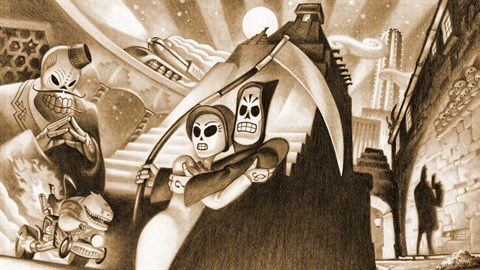
Grim Fandangos Influence on Modern Adventure Games A Legacy That Endures
Released in 1998, Grim Fandango is an iconic adventure game that has left an indelible mark on the gaming industry. Created by LucasArts and spearheaded by the visionary Tim Schafer, the game combined an intriguing story steeped in Mexican folklore with unique art direction and innovative 3D graphics. Despite its initial commercial struggles, Grim Fandango is now celebrated not only for its storytelling and characters but also for how it has shaped modern adventure gaming paradigms.
A Unique Narrative Approach
One of the defining characteristics of Grim Fandango is its compelling narrative. Unlike many games at the time, which often relied on cliché plots and straightforward character arcs, Grim Fandango presented a richly layered story about the afterlife and redemption. This storytelling depth inspired many developers to explore more complex emotional narratives in their own games. Titles like *The Walking Dead* by Telltale Games have drawn on the lessons of Grim Fandango, crafting narratives that make players care deeply for their characters and choices.
Artistic Influence on Visual Design
The visual aesthetic of Grim Fandango is equally noteworthy. The game's blend of film noir and Mexican Day of the Dead imagery created a distinctive style that has influenced various modern adventure games. Developers now frequently utilize strong visual narratives to complement storytelling. Games like *Cuphead* and *Oxenfree* showcase how artistic style can play a crucial role in immersing players in their worlds. The Graveyard, one of the levels in Grim Fandango, featured an evocative backdrop that paved the way for environments rich in atmosphere and detail.
Challenging Puzzles and Game Mechanics
When it comes to gameplay, Grim Fandango introduced complex puzzles that required players to think critically and creatively. This departure from simpler, more linear puzzle design encouraged developers to craft intricate challenges that reward exploration and problem-solving. Modern titles like *The Return of the Obra Dinn* highlight similar interactivity where the puzzles are integrated into the narrative, thanks to the foundational mechanics laid down by Grim Fandango. The influence of such puzzle design extends beyond just adventure games; it has infiltrated various genres, encouraging a richer player experience across the board.
The Legacy and the Grim Fandango shop
Grim Fandango's legacy endures in the hearts of fans and developers alike, and its influence is visible not only in the game design but also in how games are marketed. The Grim Fandango shop, dedicated to bringing fans together with merchandise that celebrates the game, exemplifies how the community has evolved over the years. This shop offers unique collectibles, apparel, and memorabilia, reminding players of the beloved characters and themes of the game. It underscores a broader trend in the gaming industry where developers capitalize on nostalgia, building up communities around classic titles, and providing fans with a tangible way to celebrate their favorite games.
In conclusion, Grim Fandango is more than just a classic adventure game; it is a cultural touchstone that has influenced the design and narrative of numerous titles that followed. By pushing the boundaries of storytelling, artistic expression, and gameplay mechanics, the game laid the groundwork for modern adventure games while fostering an enduring community. Whether you are a newcomer exploring the game's rich world or a long-time fan visiting the Grim Fandango shop for a piece of nostalgia, its legacy continues to inspire and resonate throughout the gaming landscape.
